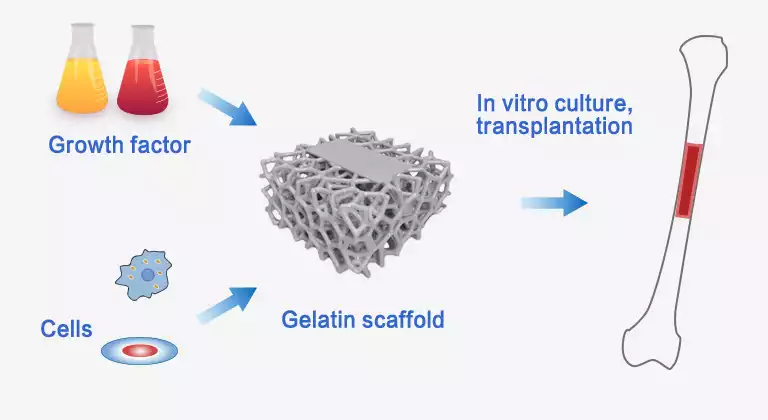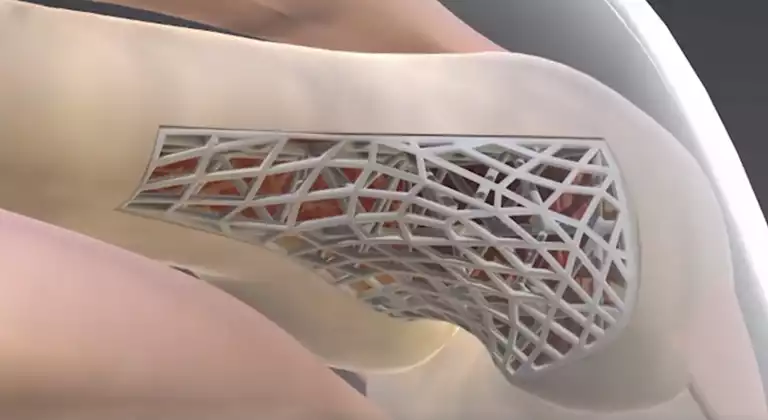Tissue engineering or regenerative medicine can be used to repair organs or tissues that are destroyed due to disease or accident. It consists of three elements: seed cells, scaffolds and growth factors. Pharmaceutical gelatin is extracted from animal tissues and has biological similarity and compatibility that other materials do not have. It plays the same role of collagen and becomes a scaffold for cell growth.

The functional groups in gelatin are chemically modified to increase its strength and make it degrade at an equal rate as tissue growth. Air is pumped into gelatin solution to form bubbles. When the solution cools, porous scaffold is formed. Cells are seeded in this scaffold and they penetrate into the interior of the scaffold through these small pores during in vitro culture. When it is implanted into body, capillaries grow around gelatin scaffold to provide nutrients to the new tissue until it is completely integrated with the surrounding tissue. These scaffolds are compatible with the body and cells keep eating them until they are completely gone, leaving regenerated new tissue.

It is widely used in the regeneration of bones. The porous of the scaffold can be modulated by controlling the parameters of gelatin solution and a structure similar to natural cancellous bone is obtained. The disadvantage of poor mechanical strength can be solved by using it with other materials. For example, hydroxyapatite is added to improve its strength. The scaffold and cells are transferred into parent's body to fuse with bone under the action of growth factors, resulting in trauma repair and functional reconstruction.
It can also be used to repair the damaged peripheral nerves. It is difficult to repair the ruptured nerve, because the surrounding tissues grow more rapidly to fill the space for nerve growth. The pharmaceutical gelatin and other materials are made into a tube that wraps around the damaged nerve to form a protective layer. This provides a suitable space for its regeneration and reduces the invasion of surrounding connective tissues. The microscopic pores in the tube wall will facilitate material exchange and vascular growth. Nerve cells grow along the tube until they are joined together.